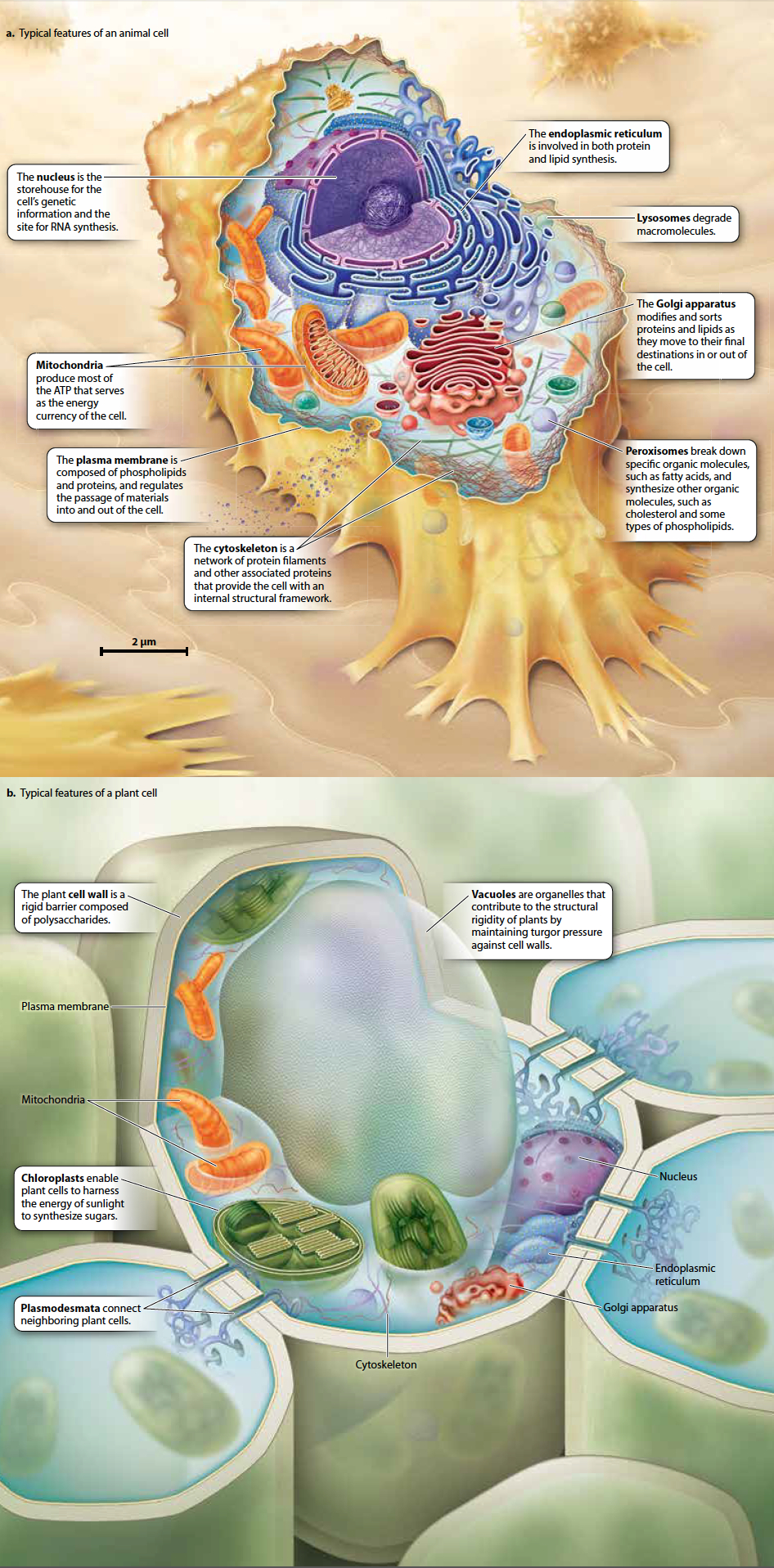Eukaryotic cells have a nucleus and specialized internal structures.
Eukaryotes are defined by the presence of a nucleus, which houses the vast majority of the cell’s DNA. The nuclear membrane allows for more complex regulation of gene expression than is possible in prokaryotic cells (Chapters 3 and 19). In eukaryotes, DNA is transcribed to RNA inside the nucleus, but the RNA molecules carrying the genetic message travel from inside to outside the nucleus, where they instruct the synthesis of proteins.
Eukaryotes have a remarkable internal array of membranes. These membranes define compartments, called organelles, that divide the cell contents into smaller spaces specialized for different functions. Fig. 5.17a shows a macrophage, a type of animal cell, with various organelles. The endoplasmic reticulum (ER) is the organelle in which proteins and lipids are synthesized. The Golgi apparatus modifies proteins and lipids produced by the ER and acts as a sorting station as they move to their final destinations. Lysosomes contain enzymes that break down macromolecules such as proteins, nucleic acids, lipids, and complex carbohydrates. Peroxisomes also contain many different enzymes and are involved in important metabolic reactions, including the breakdown of fatty acids and the synthesis of certain types of phospholipid. Mitochondria are specialized organelles that harness energy for the cell. Many cell membranes that define these organelles are associated with a protein scaffold called the cytoskeleton that helps cells to maintain their shape and serves as a network of tracks for the movement of substances within cells (Chapter 10).

Fig. 5.17b shows a typical plant cell. In addition to the organelles described above, plant cells have a cell wall outside the plasma membrane, vacuoles specialized for water uptake, and chloroplasts that convert energy of sunlight into chemical energy.
The entire contents of a cell other than the nucleus make up the cytoplasm. The jelly-
In the next two sections, we consider these organelles in more detail, focusing on the role of membranes in forming distinct compartments within the cell.